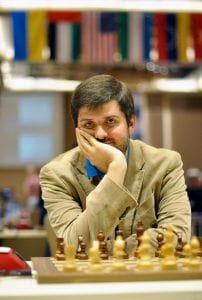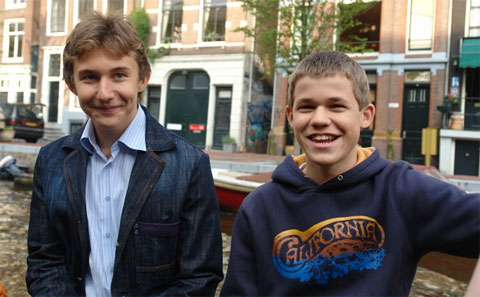“SPANISHMEN IN NEW YORK”
Prior to writing this post I have realized I have omitted the match venue from my previous posts. Now is the time to correct that mistake, since it is required for my new very bad pun from the subtitle of the article.

The game two of the world championship match followed a similar course as the game before, only with the colours reversed. Karjakin had his first White pieces and somewhat expectedly started with the move e4. And although maybe someone was expecting the currently very popular Italian game with Bc4 on move three, Karjakin’s hand, similarly as Carlsen’s hand the day before, extended the bishop travel for one square, indicating that the Ruy Lopez, or the “Queen of openings” will be the opening.
Such a decision wasn’t very big surprise, because Ruy Lopez appears often enough in comparison to Italian game, as opposed to Trompovsky compared to London System.
The big surprise, at least for me, was that we didn’t get to see the ever so popular Berlin defence, which was almost unanonimusly expected both from the experts and from the chess fans. In the preceeding World Championship matches against Anand, out of 4 instances when Anand opened with e4, he responded with Caro – Kann initially, and then exclusively with the Berlin (all those games were played in the 2013 match resulting in Anand switching completely to d4 in the 2014 match).
GAME COURSE
In order to remember when was the last time that the main line of the Closed Ruy Lopez appeared in the World Championship match, we would have to go way back in the year 1990 and the last Kasparov – Karpov match.
And i imagine chessplayers who were lucky enough to witness those great clashes can nowadays remember with nostalgia those games where Kasparov was “throwing the kitchen sink” at Karpov’s king at any given opportunity.
However, spectators who celebrated the avoidance of the Berlin by Carlsen were pretty soon left disappointed because game two was another instance of a very correct game “where nothing happens”, type of game very different from the afore mentioned Kasparov – Karpov games.
Karjakin has once again proven that his preparation has covered a broad range of subjects, as he followed a recent Topalov – Carlsen rapid (!) game up to move twelve, when Magnus was the first to deviate.
However, after the opening phase was over, Black was left with incredibly solid position with no weaknesses. Both players developed completely and shuffled their pieces a bit until Karjakin decided to fix the centre structure, letting the equality become even more apparent.
Although Karjakin was nominally pressing after the central pawn exchange, Carlsen was never in any real danger, and Karjakin’s search for advantage can be compared to searching the needle in the stack of hay.
Eventually simplification inevitably followed and soon the scoresheets were also signed. After the game, at the press conference, Carlsen showed that he is very well aware that the style of play is not very delightful for the spectators:
“”I would ask you for your understanding that this is a long match, and there aren’t going to be fireworks every game”.
We cannot blame him for playing for result and we can just hope that there will be fireworks at all.

GAME ANALYSIS
Another very correct game where both sides, as GM Alexander Delchev put it, “focused more on restricting the opponent’s chances then on creating own active plans”. For us chess fans it remains to hope that after the free day tomorrow play will become a bit more dynamic and sharp. It will be interesting to see Carlsen’s opening choice on Monday.

